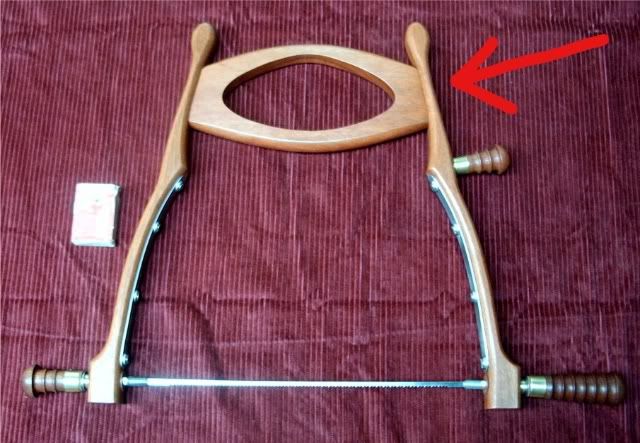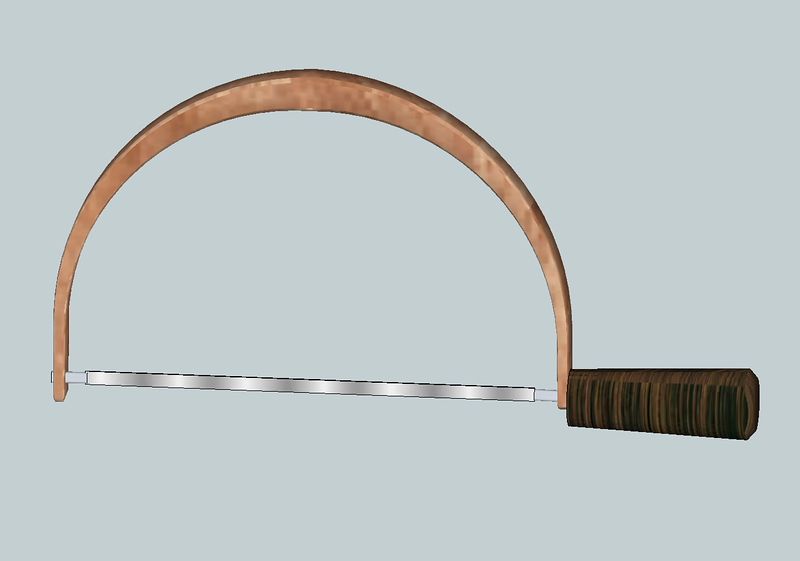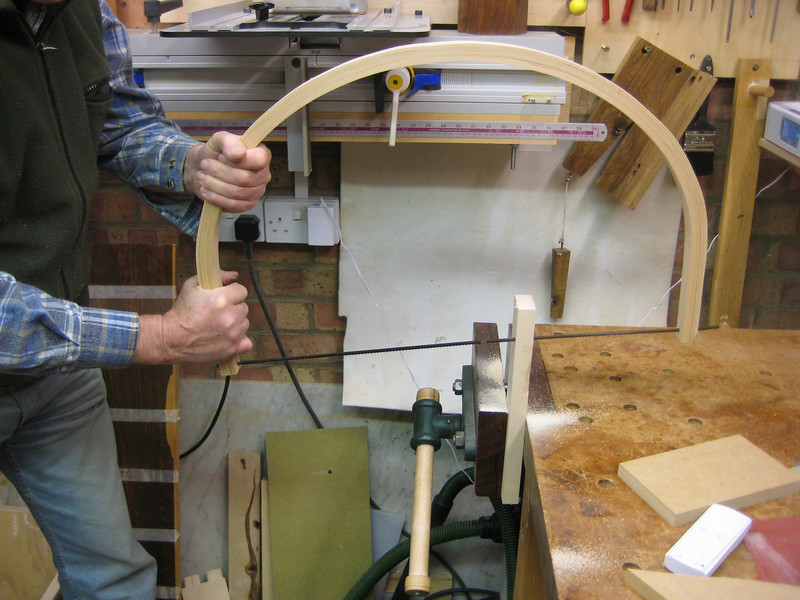swagman
Established Member
Hi all. Attached are images of the newly designed Matilda Bow Saw.

Template design. The fasteners shown for the top spreader were replaced with M6 X 35 High Tensile Cap Head Screws.

Completed bow saw. Matchbox on the left hand side of photo.

Photo showing spring steel tension plates fitted to the inside of the frame arms.
Total weight is 1.05 lbs (0.54kg).
Depth of cut = 8 inches.
Individual components including threaded inserts,washers,ferules,screws, and frame = 62
Although heavier than a Gramercy, the Matilda Bow Saw is still very well balanced.
To tension the blade, you wind the threaded handles in until the blade connecting screws lock into the inside of the frame arms.
The additional 3rd handle is very handy inclusion when using the bow saw with the blade set off vertical.
I am extremely happy with this design. Its performance, weight and balance, as well as ease of dismantling, is what I have been striving for.
Swagman.

Template design. The fasteners shown for the top spreader were replaced with M6 X 35 High Tensile Cap Head Screws.

Completed bow saw. Matchbox on the left hand side of photo.

Photo showing spring steel tension plates fitted to the inside of the frame arms.
Total weight is 1.05 lbs (0.54kg).
Depth of cut = 8 inches.
Individual components including threaded inserts,washers,ferules,screws, and frame = 62
Although heavier than a Gramercy, the Matilda Bow Saw is still very well balanced.
To tension the blade, you wind the threaded handles in until the blade connecting screws lock into the inside of the frame arms.
The additional 3rd handle is very handy inclusion when using the bow saw with the blade set off vertical.
I am extremely happy with this design. Its performance, weight and balance, as well as ease of dismantling, is what I have been striving for.
Swagman.



































